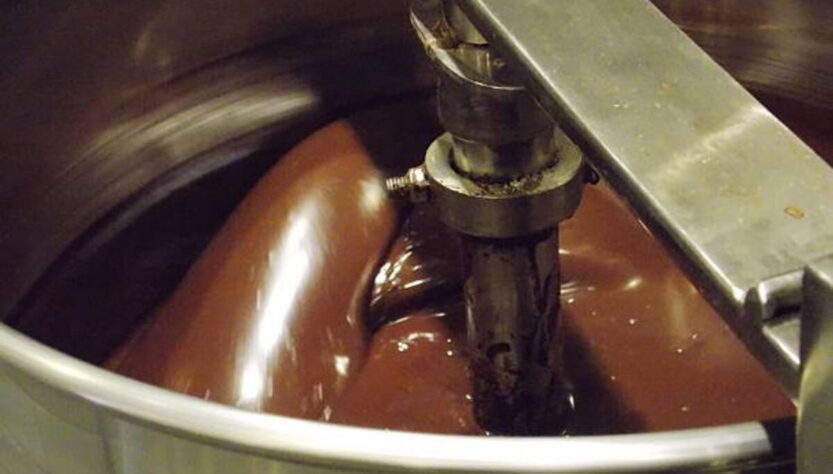Food companies specialize in producing, processing, packaging, and selling food to consumers – these businesses may range from farm operations to grocery stores and restaurant chains.
Manufacturers favor hydrogenation because the oil produced via this process does not oxidize, is cost-effective, and has high smoking points. Unfortunately, however, hydrogenation also creates trans fats, which have adverse health implications and must be considered an unintended side effect of production.
Less Fluid
Food companies enlisted hydrogenation to alter the molecular structures of fats. Hydrogenation involves adding hydrogen molecules at saturation points in unsaturated fatty acid chains; complete hydrogenation can transform liquid oils into semisolid or solid shapes that behave similarly to saturated fats, while partial hydrogenation leaves oils liquid and functioning more like polyunsaturated ones.
Partially hydrogenating vegetable oils creates trans fatty acids, a type of fat formed when hydrogen replaces some carbon atoms in heavy acid chains, changing them from their original configuration (cis) into their trans design and leading to increased LDL cholesterol and reduced HDL levels. Trans fatty acids have been linked with cardiovascular disease by raising LDL cholesterol levels while simultaneously decreasing HDL cholesterol levels.
Manufacturers typically rely on partially hydrogenated vegetable oils in processed food production because these fats do not succumb to oxidation and have a high smoking point – perfect for fast-food frying! In addition, partially hydrogenated oils tend to be cheaper than those from animal sources and last longer on shelves than unprocessed vegetable oils; their polyunsaturated form contains many double bonds, which reduce melting points and make them susceptible to oxidation than monounsaturated fats.
Less Saturated
Fats (lipids) comprise molecules with carbon atoms attached to multiple other atoms, often in long chains with bends at their ends known as tails. Their length and the number of seats determine their fluid or solid nature, respectively. Liquid oil that contains primarily polyunsaturated fatty acids becomes semisolid or solid by hydrogenation, which adds hydrogen at points where unsaturation exists, rendering more saturated chains that act similarly to saturated fats.
Hydrogenation alters oil’s chemical makeup to produce various products, most frequently partially hydrogenated vegetable oils used as margarine and shorteners in food processing. They don’t succumb to oxidation, making them less vulnerable to rancidity and extending their shelf life while being heat resistant, making them perfect for frying foods.
Partially hydrogenated oils alter unsaturated fatty acids to form trans configurations instead of their natural cis ones, diminishing their heart-healthy qualities and undermining natural oils’ benefits. Therefore, the American Heart Association advises limiting trans fat consumption to no more than 1 percent of your diet; when reading food labels, ensure the first three or four ingredients include evidence of partially hydrogenated oils.
Longer Hydrocarbon Tails
Lipid droplets form in cells by packing their fatty acid tails tightly so they face inward towards the center, protecting themselves from water by their glycerol heads. Since long hydrocarbon tails contain lots of chemical energy, these packs pack together tightly enough to form bilayer membranes.
Each carbon atom can form chemical bonds with two hydrogen atoms and another carbon atom for four chemical bonds; when hydrogen atoms have filled all empty spots in a fatty acid chain, its molecules become saturated.
Partial hydrogenation of oils is a widely utilized processing step used to give fats the properties associated with saturated fats, including solidity at room temperature. The process works by changing cis double bonds into trans double bonds, rendering chains stiffer and less fluid.
Fatty acids contain tails with 16-22 carbon atoms and between zero and six double bonds, the length and degree of unsaturation being crucial factors in physical properties such as melting point. Lipids with shorter tails typically have lower melting points.
More Kinks
Hydrogenation has altered trans fat molecules to become shorter and more flexible, similar to saturated fats in butter or lard. Food manufacturers value trans fats because they add plasticity and emulsion stability when creating margarine or shortenings.
Hydrogenation has lengthened phospholipid tails and added bends (kinks) in their hydrocarbon chains, making it harder for water to pass through the bilayer membrane.
Hydrophobic zones occur where only the nonpolar tails interact with water molecules; their polar heads interact directly with them. This interaction is called hydrophilicity. Kinks in lipid tails help prevent its size from shrinking too drastically.
